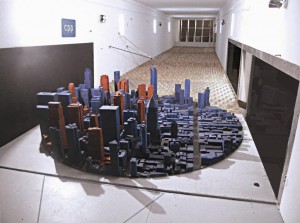News
Not all wind tunnels are the same
Even if you’ve never experienced a wind tunnel up close, chances are you’ve seen at least one in car commercials, TV documentaries, or even on your tour at NASA. But did you know there are different kinds of wind tunnels? A wind tunnel is a tool that engineers use to solve airflow problems, but like screwdrivers and wrenches, there are different tools for different jobs.
Aerospace wind tunnels

This is what most people think of when they hear the term wind tunnel. An aerospace tunnel helps designers and engineers understand how aircraft will behave during various flight conditions. Aerospace tunnels have two very important characteristics:
Near-uniform speed profile: Designers of aerospace wind tunnels try to keep speeds as constant as possible throughout the cross-section. Speeds naturally change near the walls, but the central portion of a good aerospace tunnel will have near-constant airflow.
Low turbulence: Turbulence is a measure of how gusty a flow is; that is to say, how much the wind speed fluctuates above and below the desired speed. The best aerospace tunnels have very low turbulence levels.
Automotive wind tunnels
These are usually very similar to aerospace tunnels, but automotive tunnels often feature a rolling floor that lets test engineers simulate a car driving on the road at various speeds.
Atmospheric boundary layer (ABL) wind tunnels
ABL wind tunnels are specifically designed for engineers who study buildings and structures. The earth’s atmosphere changes dramatically from ground level to the top of a building. Near the ground, the wind is slow and gusty (turbulent), but wind is faster and less gusty at roof level.

These changes in wind speed and turbulence are different for a Manhattan skyscraper than for a warehouse surrounded by farmland. For these reasons, ABL tunnels simulate
How wind speeds increase as you get higher above the ground.
How turbulence decreases as you get higher above the ground.
How surrounding buildings, terrain, and other features affect these characteristics.
Most ABL tunnels let engineers consider a variety of wind conditions and include a rotating turntable to simulate winds approaching from many directions.
If your project requires a solid understanding of the effects of wind, remember that not all wind tunnels are created equally. Contact CPP today to let our experienced wind engineers ensure that your next project is efficient, safe, and reliable.
Be sure to watch CPP Vice President John Carter explain atmospheric boundary layer wind tunnels while standing inside of one.
